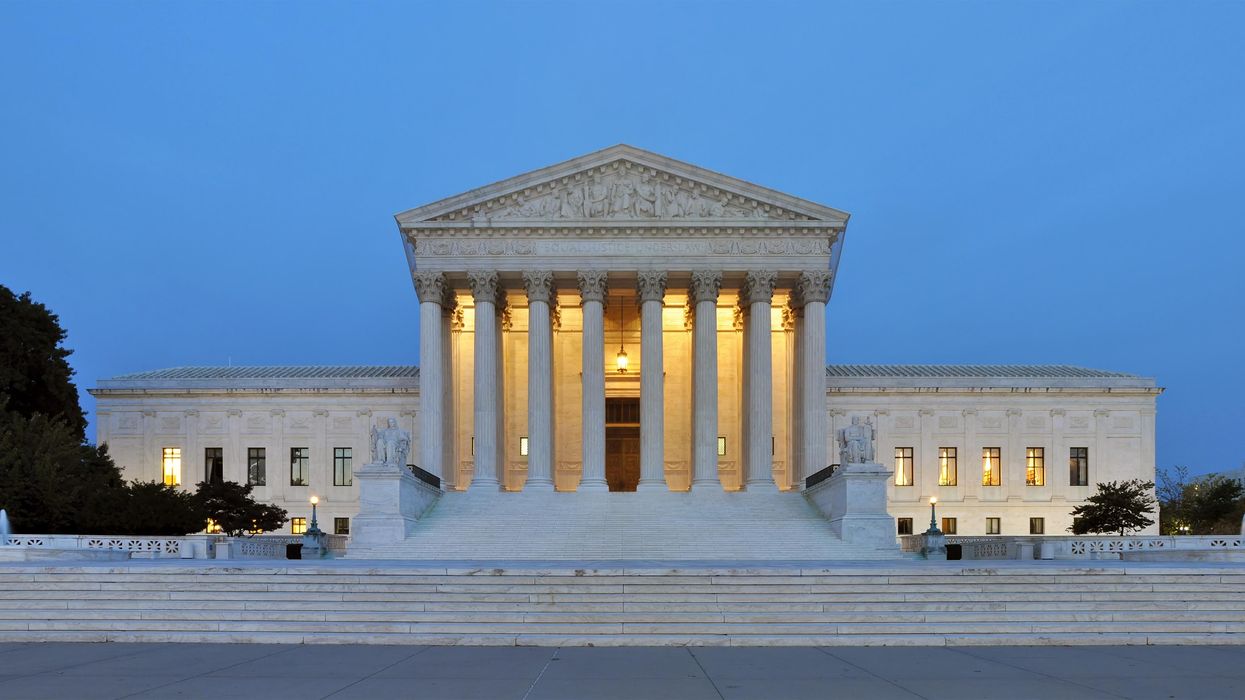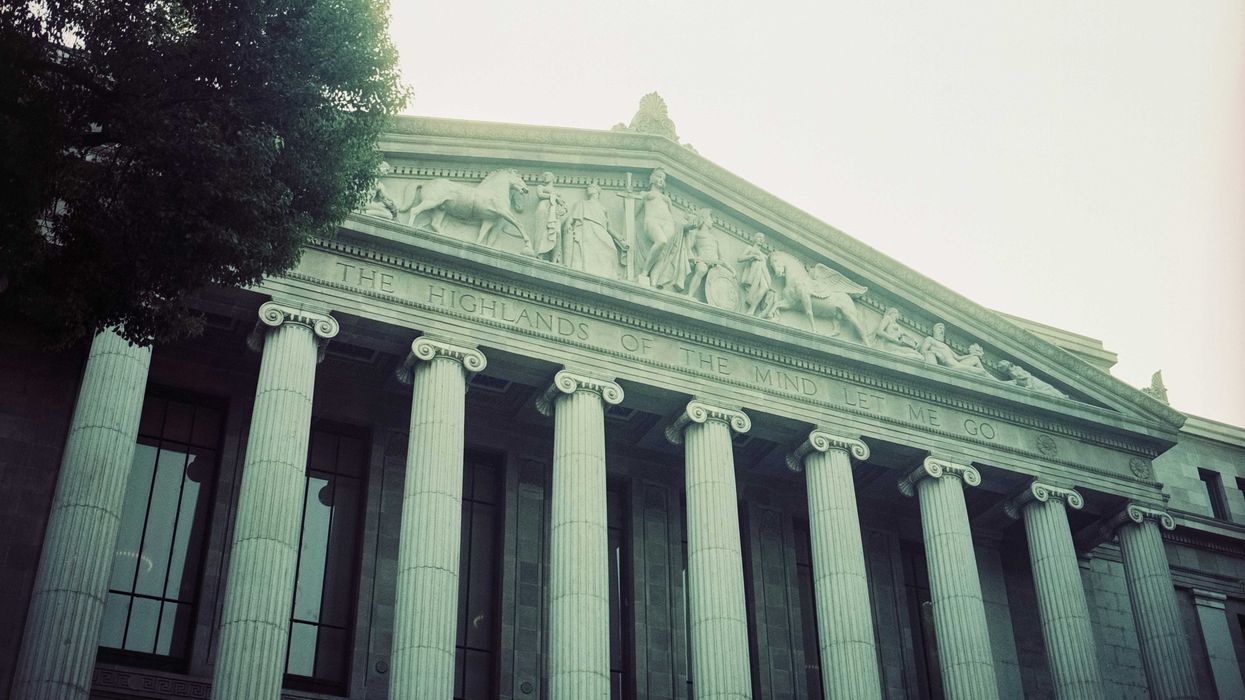Sally, host of the podcast “You Don't Have to Yell,” is director of digital strategy at Rank the Vote, an organization dedicated to promoting ranked-choice voting nationwide.
Americans expect the Supreme Court to rule objectively on the law, free of any partisan baggage. And Americans’ preferred strategy to make this happen is to pack the body with as many justices who think like them as possible.
We saw this dynamic in action during the final months of the Trump administration, when Senate Majority Leader Mitch McConnell rushed to confirm Amy Coney Barrett. This led to cries of partisanship from the left and the creation of a commission on Supreme Court reform by President Biden in April 2021.
The commission released its findings earlier this month, covering the logistics around term limits for justices and expanding the court beyond its current nine members, but did not take a position on those options. While these reforms may have merit, all would be interpreted as further attempts to make the court more partisan and further reduce its credibility.
Still, with a recent poll by Gallup showing approval of the Supreme Court at the lowest level since polling began, it’s clear the issue of trust in the court needs to be addressed.
The real solution to restoring the court’s credibility lies in reforms that can reduce partisanship in government overall, as opposed to solely focusing on the judiciary.
How it started ...
The Supreme Court was designed to serve as a safeguard against the threat that wild swings in public opinion could pose to the rights of the minority. The Founders had good reason to fear this, given the last wild swing in public opinion resulted in a band of angry farmers defeating the world’s most powerful military to replace a monarch with a system of government most people had never heard of before.
Because the court was one of three equal branches of government, the early Americans had no problem with it being a highly partisan body. Later, Abraham Lincoln appointed his campaign manager to the court and worked with congressional Republicans to expand the body to make room for an additional pro-Union justice. Salmon Chase openly campaigned for a presidential nomination in 1868 while serving as chief justice.
Americans had little problem with this for two reasons:
First, Americans were more concerned with the court becoming too powerful, as opposed to whether it was too partisan. Unlike now, the Supreme Court at the time wasn’t viewed as the final arbiter of constitutionality, but part of a larger conversation around how far government authority should extend.
Second, partisanship was far more fluid than it is today. Parties were often related to a specific policy, driven locally and expected to die. If we look back to Lincoln’s expansion of the Supreme Court, it should be noted he appointed a pro-Union Democrat, as Lincoln was building a coalition for a new party in anticipation of an end to the GOP.
How it’s going ...
After the Civil War, political parties became much more static and the Supreme Court more powerful. While multiple parties played a part in American politics up through Theodore Roosevelt’s Bull Moose era in the early 1900s, their influence over the two major parties waned.
Meanwhile, the concept of judicial review gave way to judicial supremacy — giving the court far more power over its own docket and a far greater say in which laws are struck down.
With this increased power, the desire for justices to be nonpartisan became more important, and appointing blatant partisan allies gave way to picking justices from the judiciary.
Aside from the confirmation hearings of Robert Bork and Clarence Thomas in the 1980s, Supreme Court appointments were largely bipartisan affairs, with most justices being confirmed by a supermajority. Since the removal of the filibuster for Supreme Court nominees, confirmation of justices by the Senate has fallen largely across party lines.
How to fix it ...
The reforms considered by President Biden’s commission have their benefits but also come with unintended consequences. Proponents of expanding the court argue such a change would match the growth in the federal court system over the last century and would reduce the power of each individual justice, diluting the partisan influence of any one justice.
Those in favor of term limits argue the court would better reflect the partisan makeup of those they serve, as each president would get the same number of appointments per term.
These reforms come with their drawbacks, however. Expanding the number of justices on the court is a highly contentious issue and would only serve to increase accusations of partisanship. One study on term limits for Supreme Court justices showed they would incentivize the appointment of more partisan judges and result in legal instability.
A more obvious solution lies in attacking the hyperpartisanship that makes Supreme Court appointments such contentious affairs in the first place. As America’s two major parties have grown further apart and less likely to compromise, almost every important vote appears to fall along party lines.
A party-line vote on a Supreme Court justice is like serving as the nominating president’s campaign manager, as the voices of those on the other side of the aisle go unheard. Regardless of how the court rules, this in and of itself poses a crisis to the branch’s legitimacy.
The polarization of American politics is a direct result of our first-past-the-post electoral system, where a candidate only needs one more vote than second place person to win, as opposed to a true majority. In such systems, candidates are rewarded when they lean into the extremes of their party and demonize the other side, as opposed to seeking out the approval of the majority of voters.
Reforms such as ranked-choice voting have proven to reduce polarization in elections by requiring candidates to appeal to the majority of voters they wish to serve, as opposed to a winnable plurality of hardened partisans.
We can’t expect those serving on the Supreme Court to have more credibility than the elected officials who appoint them. By changing our elections to elect leaders who better reflect the people they serve, we can expect the court to change in kind.



















